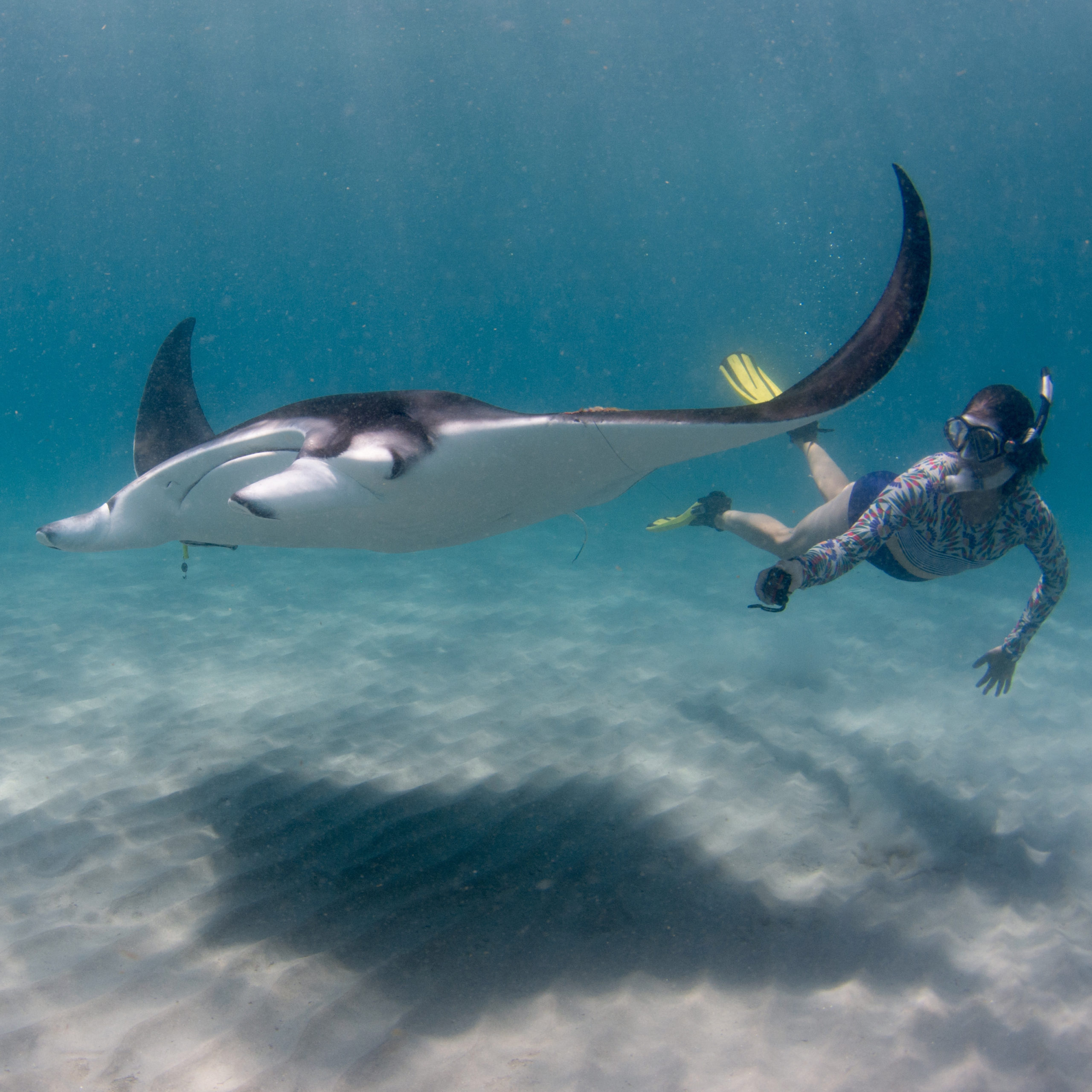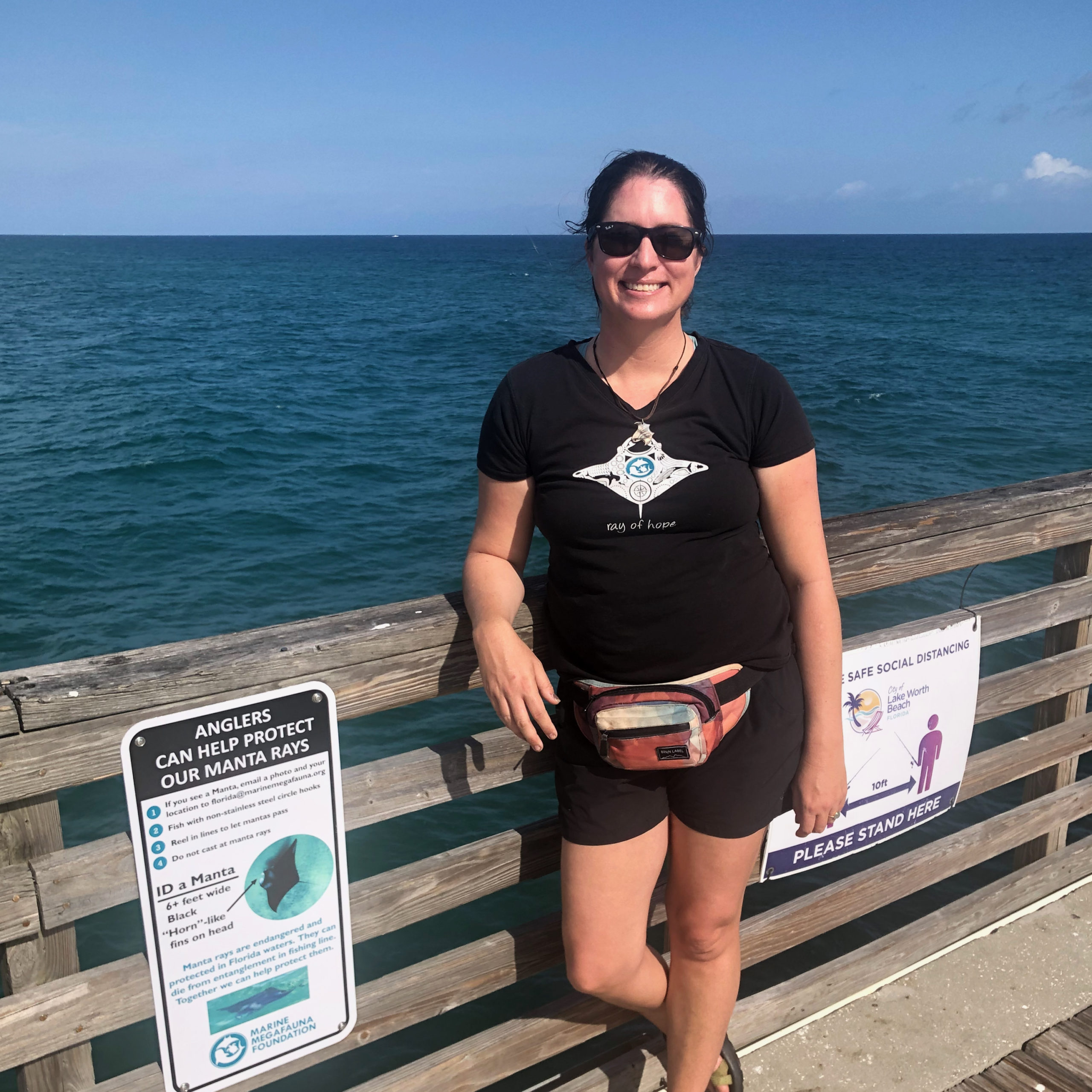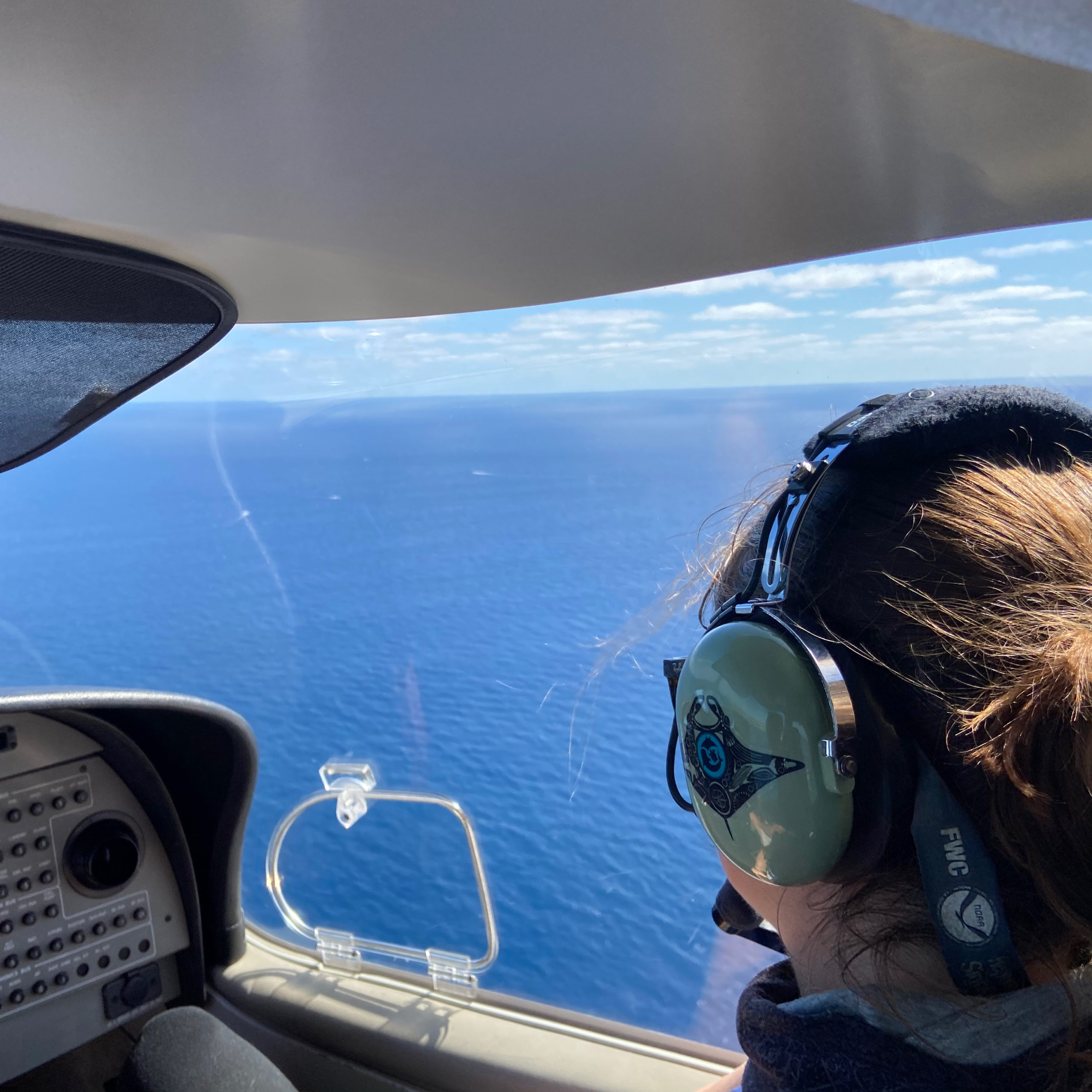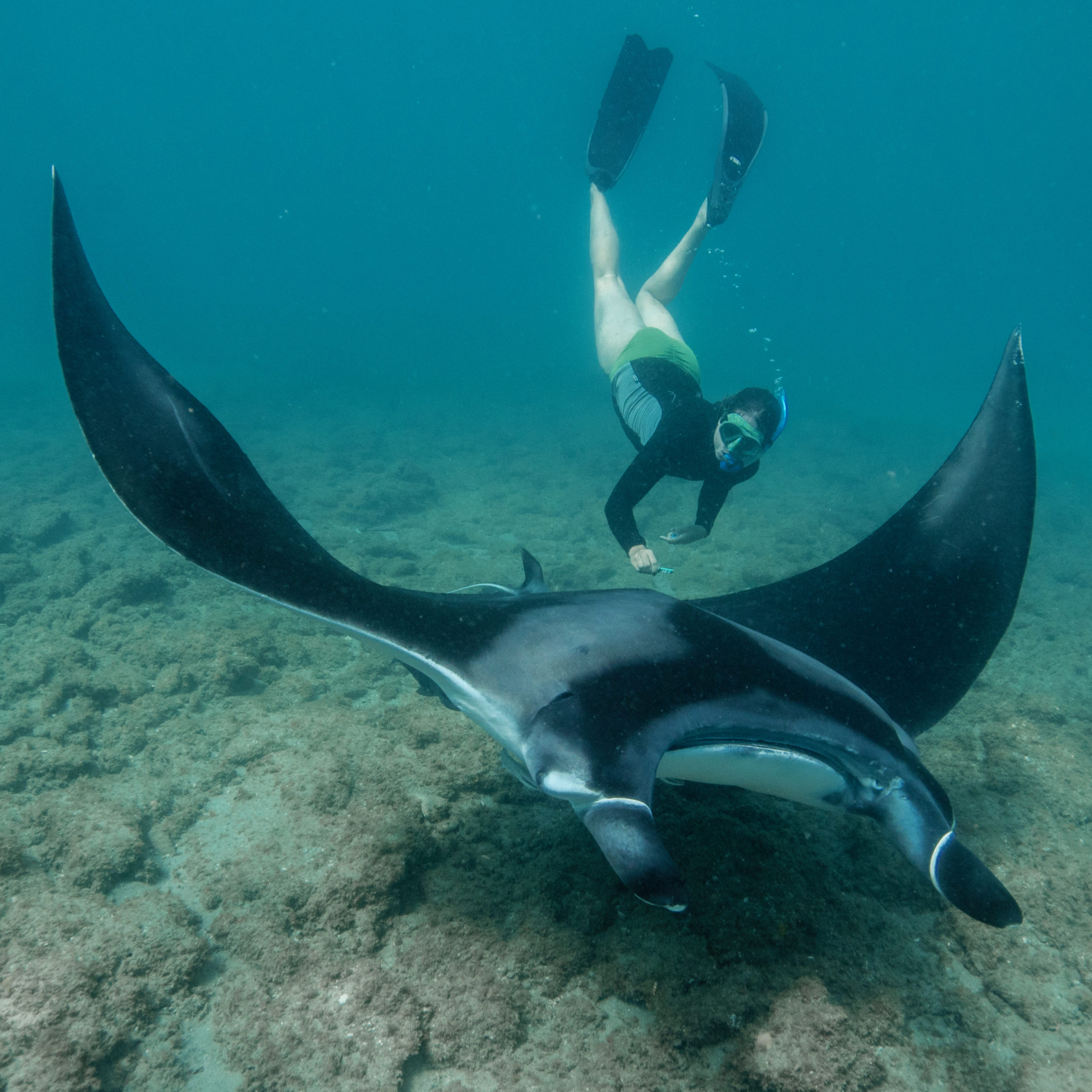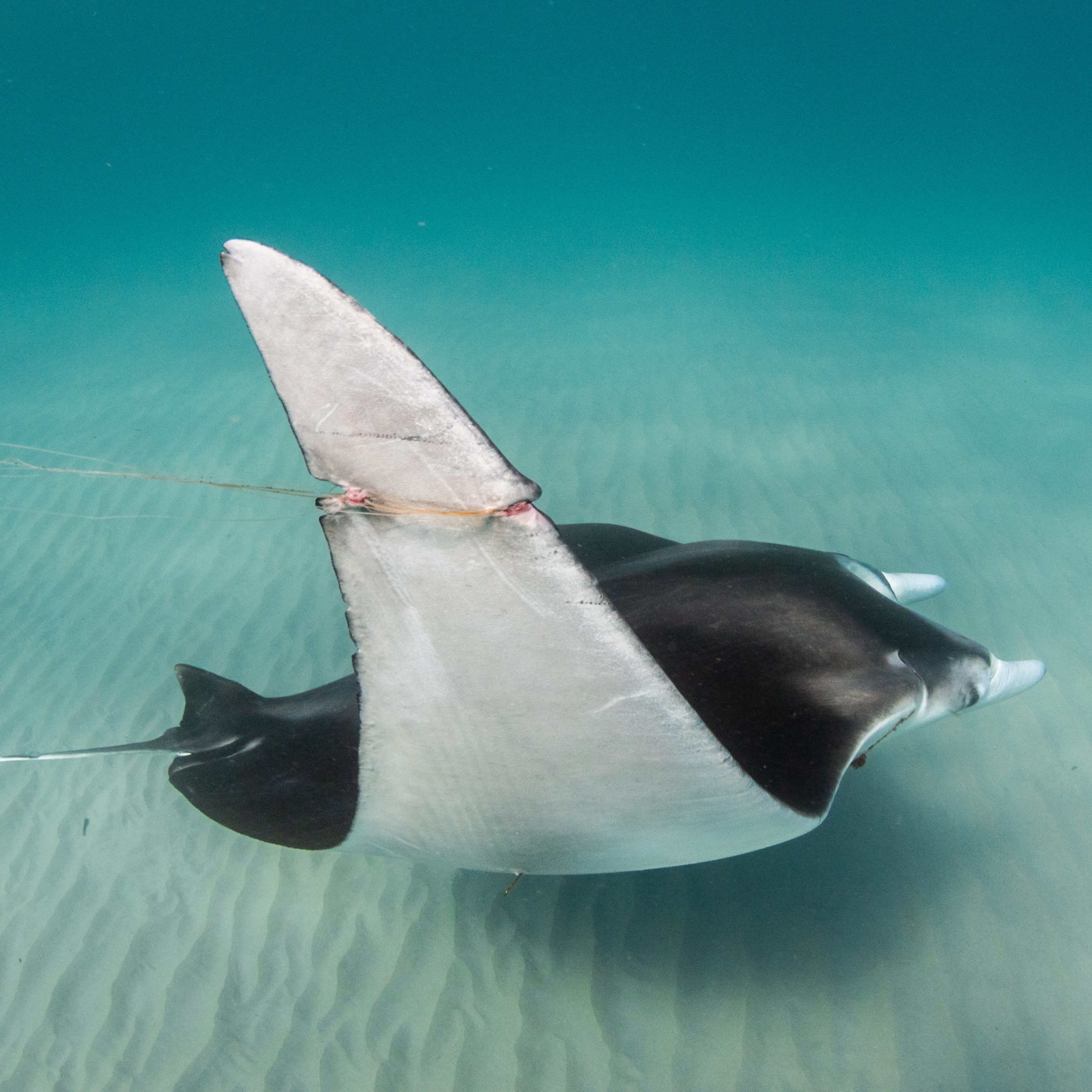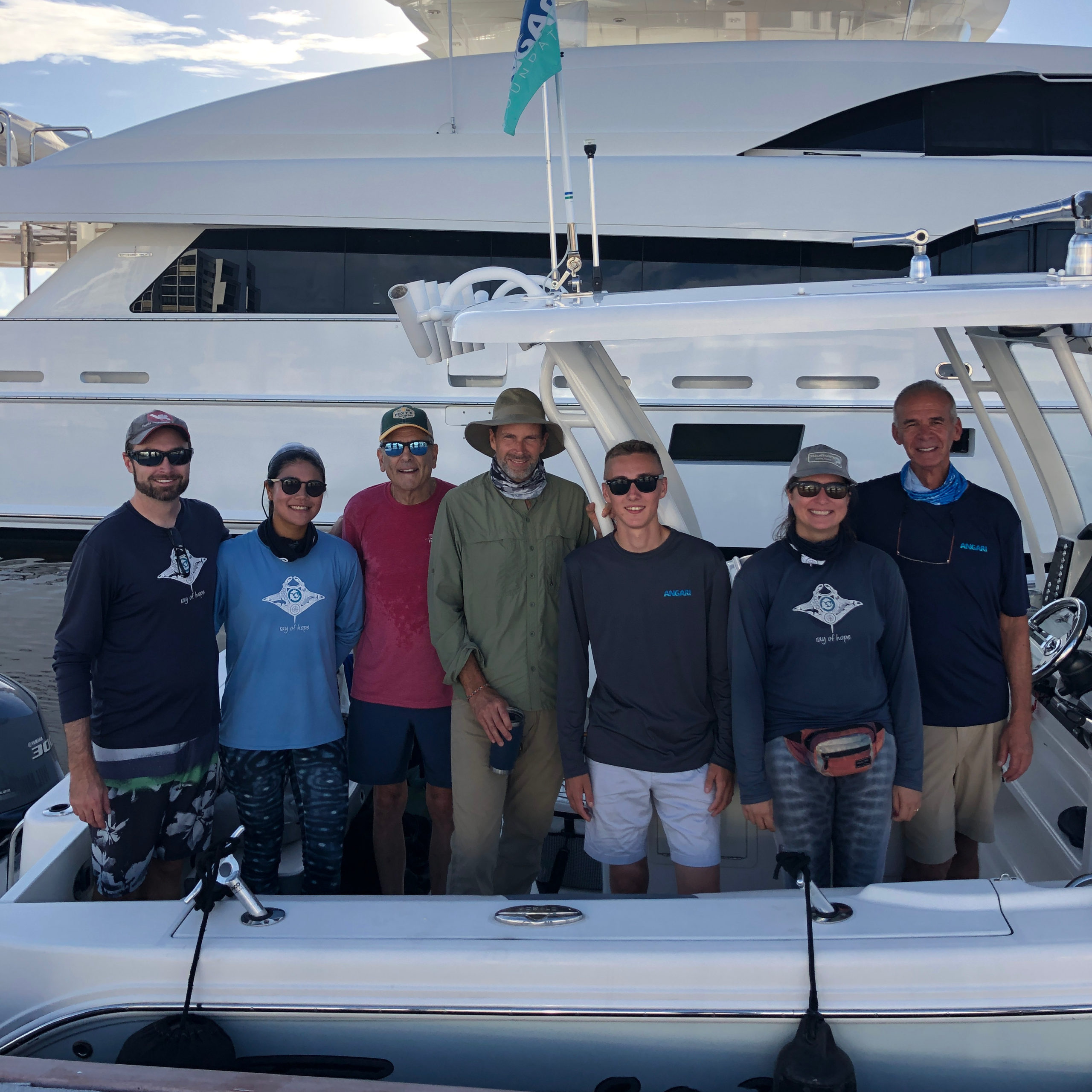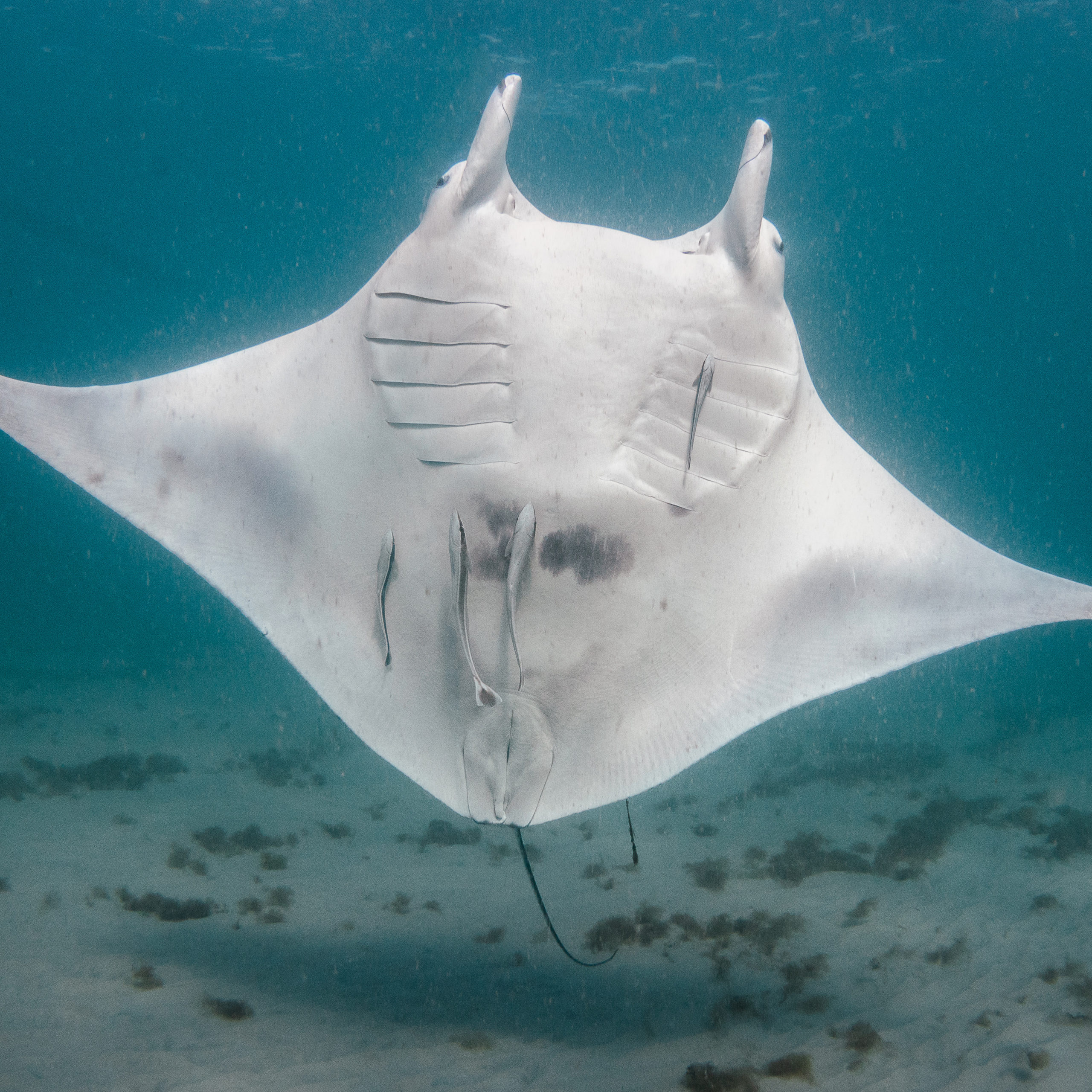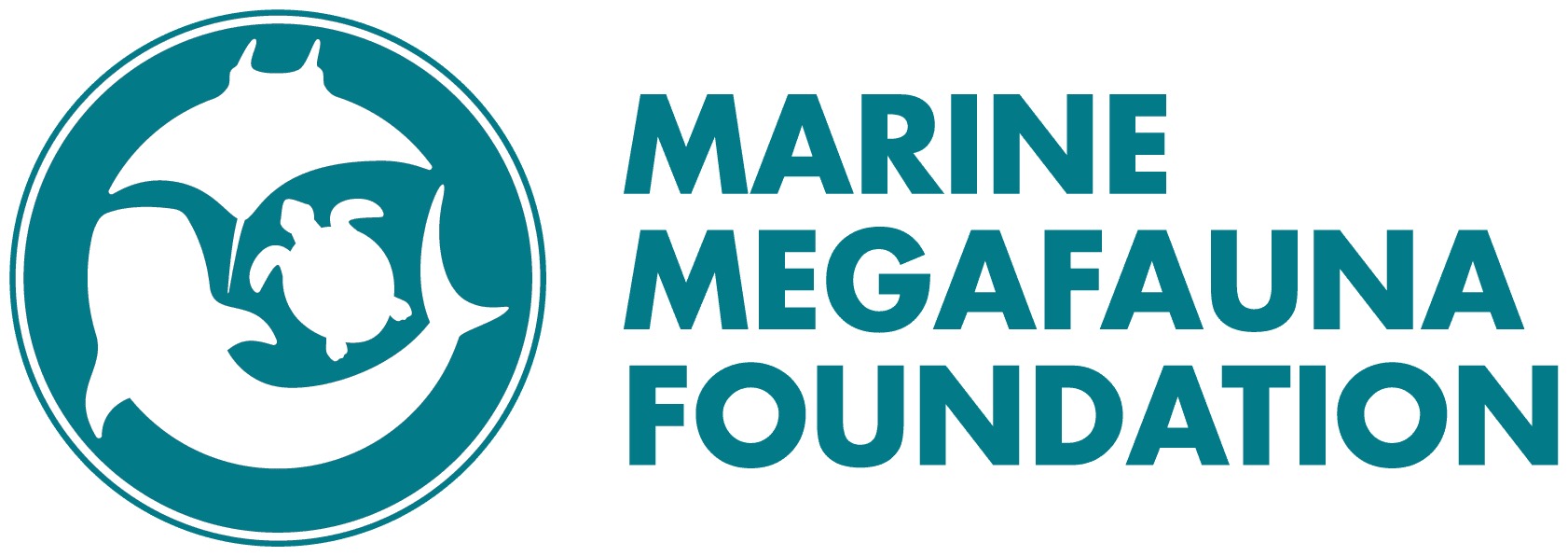


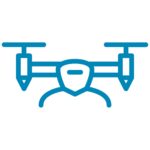
Meet Jessica Pate
Originally from eastern North Carolina, I have always had a love of animals and the outdoors. While at UNC-Chapel Hill, I majored in environmental science and studied abroad in Mexico and Kenya. These experiences stoked my desire to travel, conduct field work and conserve the natural world. I have lived and worked around the world as a biologist, including studying sea turtles in Costa Rica and Ghana, diving in Honduras and even as a professor of marine biology on a sailboat while crossing the Atlantic Ocean.
In 2016, I started the Florida Manta Project (FMP) with Marine Megafauna Foundation (MMF). I first saw manta rays in Florida while working on sea turtle nesting beaches, and was surprised to learn that manta rays there were unstudied. Since the inception of the FMP, I have described south Florida as a potential nursery habitat for young manta rays and documented a high frequency of anthropogenic impacts (fishing gear entanglement, vessel strikes) on these mantas.
2014 M.S. Biology, Florida Atlantic University
2007 B.S. Environmental Science, University of North Carolina at Chapel Hill
Get To Know Jessica
I’m originally from Goldsboro, North Carolina, a small-ish town in eastern NC mostly known for an air force base and farming.
This may be a boring answer, but manta rays are my favorite animal. However, I love looking for the very smallest animals, such as nudibranchs and blennies, when I scuba dive.
I first saw manta rays in Florida while working on sea turtle nesting beaches, but I was never able to successfully swim out to them. I convinced a friend to take me out on the boat to look for them and we found one! I got in the water and this female manta flipped upside down and swam underneath me, closely inspecting me, for 5 minutes. I was so in awe; I could barely take photos with my camera. This was when I first knew I wanted to study manta rays.
There was no dedicated research on Florida manta rays before the Florida Manta Project. There was one publication from the 1990s about three mantas observed in the Indian River Lagoon and the Georgia Aquarium had conducted some aerial surveys in northern Florida. Nothing was known about manta rays in south Florida.
When the winds and seas are calm, we go out to look for mantas. We take the boat close to shore and look for manta rays with the drone. When we find a manta, we get in the water (free-diving) and get an identification photo of the manta ray’s belly, as well as other information on size, habitat and behavior. We may collect genetic samples or put on satellite and acoustic tags. We also will deploy a net behind the boat and collect plankton samples to learn what the manta rays are feeding on. We don’t see manta rays on every survey. If we don’t find mantas, we’ll stop to swim on the reefs or with whatever marine life we find, such as turtles, tarpon, and hammerhead sharks.
I honestly had no idea what I wanted to do career-wise through most of my undergraduate. I just knew that I didn’t want a standard office job and that I wanted to do something positive in the world, so I majored in environmental science. After undergrad, I got jobs working on sea turtle nesting beaches. However, I was still open to many fields of biology. It wasn’t until I became SCUBA certified that I knew I wanted to focus on marine biology.
My least favorite part about my job is that it is completely weather-dependent. Sometimes I will be stuck on land for weeks unable to do research when the ocean is too rough.
I had very few expectations of what I would find when I started the Florida Manta Project. Our first two major findings were that south Florida is a likely nursery habitat for young manta rays and that many of these young mantas are entangled in fishing line and have injuries from boat propellers.
I enjoy scuba diving, underwater photography, bird watching, hiking, reading and running.
Get experience and find your niche. Volunteer in the field and lab, go to conferences, talk to your professors, network with local groups. Make connections, get experience that makes you marketable, and figure out what you like doing. Also, look at the current research (recent publications or at abstracts from conferences) and talk to scientists and see what work needs to be done and what skills are needed. Also, check the job boards and see what skills are required for certain jobs, to make sure you have a realistic idea of what’s available.
Interview conducted in May 2022


